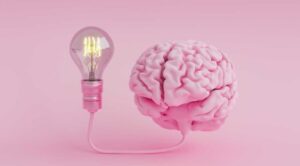Love is sometimes a phenomenon that we are exposed to, sometimes a complex idea that we find difficult to comprehend, and sometimes an existence that radically changes our lives, a rebirth. In short, love has touched all of our lives in some practical or theoretical way, at least at some point in time. Sometimes we experience love in person, sometimes through the experiences of an unforgettable novel character, or through the bitter verses of poets who have surrendered to love. Indisputably, all of these practical and theoretical experiences of love are extremely valuable and special in their own right. Love is a sublime emotion that every human being experiences and keeps alive in a unique way. While some of us navigate between the thin line of abandonment and being abandoned on the mysterious paths that love takes us on, some of us maintain a lifelong union.
Definitions of Love
The phenomenon of love is based on an extremely complex pattern in which psychological, neurological, social and cultural factors come together and manifest in the individual. One of the main reasons for this complexity is that the definition of love and the way it is experienced varies from individual to individual, and therefore the characteristics that the subject attributes to the object are based on an absolute subjectivity. The main reason for this is the existence of various principles and mechanisms that are constructed in the unconscious at the very basis of the subject’s relations with its objects. The unconscious reality of each individual is unique and completely subjective. On the other hand, love can be basically defined as an individual’s overthinking of another individual and forming a passionate and excessive bond of love towards him/her.
Nevertheless, it should be noted that love has a dual nature. While love is sometimes based on empathy, altruism and compassion, it can also be the direct or indirect cause of phenomena such as murder and suicide by revealing destructive motives in people. For this reason, love is not a simple emotion that can be taken lightly; it is a phenomenon with very serious effects and consequences in individual, social and cultural contexts. Love is at a very special point as it is both a cause and a consequence of human existence. For centuries, many literary figures, philosophers and scientists have devoted themselves to finding the formula, definition and mechanism of love. However, from centuries ago to the present day, no one has been able to agree on an absolute definition of love.
Although love seems to manifest physiologically on a hormonal and neuronal level, it is also a complex phenomenon, especially involving unconscious structuring and internal processes: For this reason, there are as many types of love as there are people in the world. Thus, the phenomenon called love cannot fully include the concepts of absoluteness, objectivity, universality and general validity. Nevertheless, modern branches of science such as neuroanatomy, neurophysiology and neuropharmacology emphasize that the effects and mechanisms of love on the brain and nervous system structure of Homo sapiens can be explained on the basis of physiological elements such as neurotransmitters, synaptic structures, hormones, etc.
In conclusion, the origin of love is based on the attempt to replace the absence and coldness of existence with the other. Love is the art of constructing meaning in a meaningless world. For this reason, the scenarios created by human beings, who are fictional beings, and the figures who play a role in these scenarios vary on the basis of personal history, time, space, etc. Therefore, there is no absolute definition of what is called “love”. Love is a reality that each individual has constructed in their own inner and subjective world. Love is actually something that does not fit into any definition, model or theory, that overflows from one’s self to the other, that cannot be expressed and marked in language, but that will inevitably be expressed in order to reach “that person” somehow, somewhere and at some time. It is outside of logic and description, far away from everyone and everything, it is only that which is in it and remains in it.
CONCLUSION: ‘Love is what is missing and what remains missing’.
Special Note: We would like to thank dear Murathan Demiriş for his permission to publish parts of his Master’s Thesis in this article. Click on the relevant link to access the full thesis.





